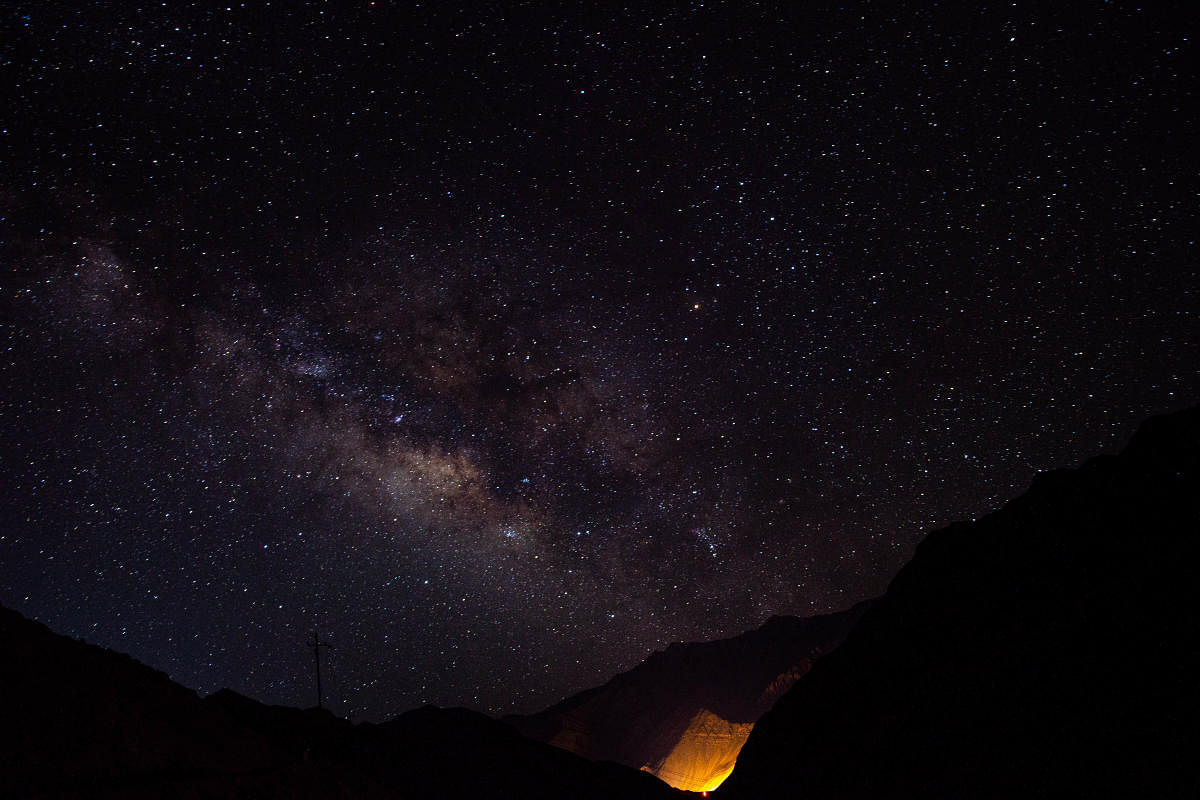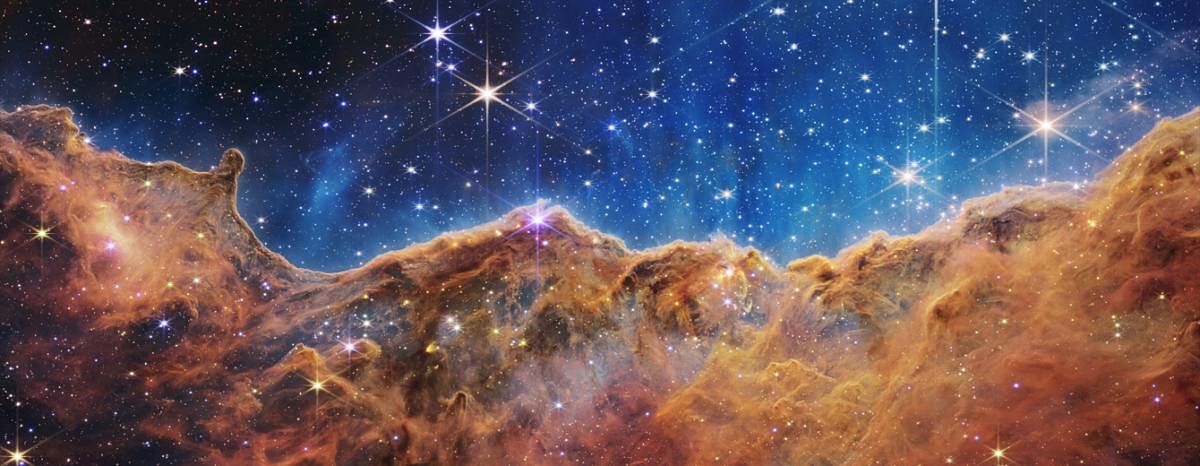

Star gazing has acquired newer dimensions. What was once a singularly private pursuit is now a legitimate (read Instagram-approved) thing to do. While astronomy as a hobby is still nascent in India, astrotourism has caught on with Gen Zers and millennials. Although the pandemic had put a brake on such explorations, it could not dent the excitement of the hobbyists who were only waiting to set out again. The recently released images from the James Webb telescope have further piqued interest. A few startups, the most popular one among them Bengaluru-based, provide unique ways of exploring the Universe while also managing a trip to an exotic locale. The so-called 'astro-villages' in stargazing hotspots such as Sariska in Rajasthan and Benital in Uttarakhand are equipped with night-vision domes and large-scale telescopes. On offer are also online courses, guided tours and observatories, paving the way for astrophotography enthusiasts to expand their hobby to the great beyond.
Shooting the Milky Way
The Milky Way is the most mesmerising subject for astrophotographers as it dominates the night skies. It also happens to be one of the easiest and most impressive astrophotography subjects to master. However, capturing it the right way can get tricky. With these simple tips, you can master the craft.
* Plan, but: To determine the best possible time and place to photograph the night sky is important. Light pollution from the city, towns or factories can hamper the clarity. Pick a spot which has a minimum light source. A 30-km radius away is the best recommendation. However, be ready for the odds even if the prediction is clear skies. Weather can change without warning, and clouds can form at any moment. Pro tip: pick a day when there is no Moon or at least when the moon is least visible— that way, the sky is much clearer. So check the Moon phase. The closer to the new Moon the better your chances of great clicks.
* Camera and equipment: A full-frame camera has better capabilities to capture images. However, crop frame cameras too can capture good pictures. A wide-angle lens with a wide aperture is a good combo. Like 14-24mm f2.8 or 24mm f2.8. A stable tripod to mount the camera is essential as you will be shooting long exposures. Charge backup batteries and carry spare memory cards.
* Settings: The best camera settings are 14-24mm lens, f2.8, 25-30sec shutter speed/exposure time, and ISO 1000 on a tripod. Set the focus to infinity, and drop the aperture to the widest option available on the lens. Don’t forget to shoot in RAW image format, which has better processing capability than JPEG. Pro tip: use a self-timer if you don’t have a remote-release device. Aperture 2.8 is best on a wide-angle lens with a camera that can handle noise well at high ISOs.
* Composition: Once you have located the Milky Way and taken test shots, compose the frame with elements in the foreground — look for interesting objects or mountains and waterfalls, trees etc. If you don’t have those options, stand near the camera or ask someone to pose for you. It’s always better to add interesting elements rather than shooting just the open sky. Try both landscape and portrait/vertical angles.
* Apps that can help: To locate the Milky Way, use stargazing maps like NASA App, SkyView Lite, and Stellarium, to name a few. These apps will show sky maps based on time and geolocation. You can plan your position in advance accordingly.
* Post-processing: Import the RAW files into photo editing software. Tweak the exposure accordingly. Remember, if you blow up the exposure, you will introduce noise/grains into the image. Colour adjusting will enrich the image, but try to keep it as natural as possible. Post-processing is essential to bring out the best quality results and highlight the details.
Apart from the Milky Way, you can capture star trails, and timelapse, and with the help of a telescope, you can photograph deep space objects too.
How did the James Webb telescope capture the images?
NASA’s James Webb Space Telescope delivered the deepest and sharpest infrared image of the distant universe so far. Webb’s First Deep Field is galaxy cluster SMACS 0723, and it is teeming with thousands of galaxies — including the faintest objects ever observed.
According to NASA, the galaxy cluster is a slice of the vast universe approximately the size of a grain of sand held at arm’s length by someone on the ground. The images led to a huge celebration across the world, especially for astronomers and space geeks. The James Webb Space Telescope (sometimes called JWST or Webb) with a 6.5-meter primary mirror is a large infrared telescope, expected to be the premier observatory of the next decade.
But how did JWST capture the images? JWST uses specialised infrared cameras to capture the galaxy. The light in the space cannot be seen through a naked eye. Hence, infrared cameras come into play. Six different colour filters are used to capture the image and a grayscale picture is then converted to colour. The processors select a combination of unique filters from the shortest wavelength being blue to red on the longest wavelength. They merge data from multiple instruments into one picture. An element of artistry comes in to capture the imagination of the viewers — there is a conscious aim to balance science and art in these images.
Top spots for astrophotography in India
* Hatu Peak in Himachal Pradesh
* Devasthal in Uttarakhand
* The Great Rann of Kutch in Gujarat
* Jaisalmer, Sariska and Alwar in Rajasthan
* Ladakh, especially the Hanle village
* Forested areas like the Western Ghats
Astrophotographers to follow on Instagram
Here's a short list of astrophotographers whose work you can enjoy and appreciate on social media
* Navaneeth Unnikrishnan: An amateur Indian deep-space photographer, Navaneeth is gaining fame for his capture of the deep skies from stunning locales in India.
* Tracy Lee: Tracy is a Milky Way expert and is a sort of pioneer in selling her photos as NFTs. Lee has managed to hold her own in a male-dominated field and her images are lauded for their dramatic quality.
* Connor Matherne: Connor is a planetary scientist who specialises in shooting nebulas. His descriptive captions are a treat to read.
* Shuchang Dong: Winner of the 2021 Astronomy Photographer of the Year Award from the Royal Museums, Greenwich, Dong won the honour for his mindblowing image of the 'The Golden Ring' during a solar eclipse.
The author is a photojournalist. Find his pictures on Twitter and Instagram @pushkarv